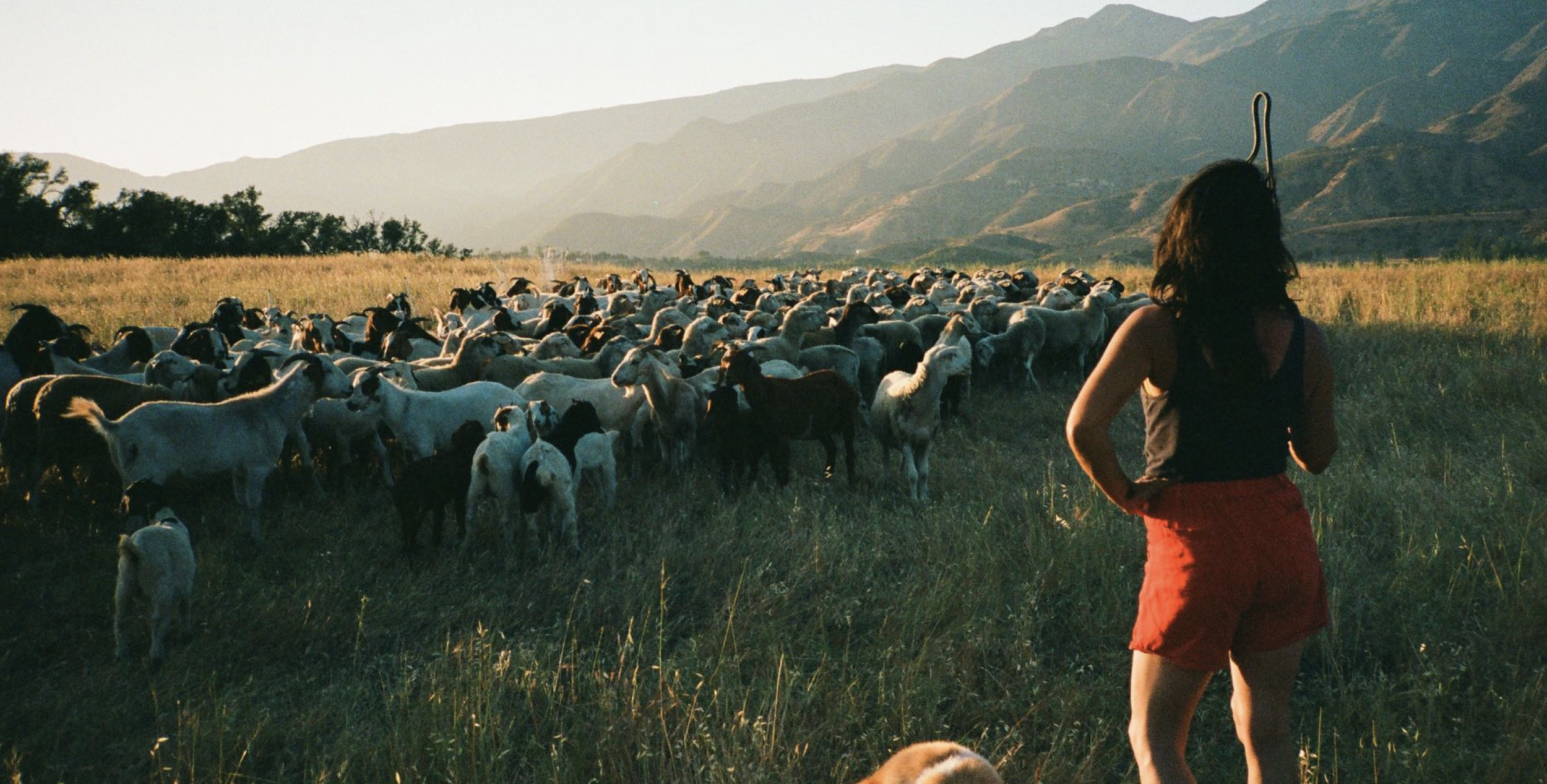All Hooves On Deck
Photo by Shepherdess Land and Livestock
CEC co-hosts a community-supported grazing summit to boost wildfire resilience
By Molly Taylor, CEC’s Climate-Smart Agriculture Manager
Protecting Central Coast communities from intensifying climate threats requires all hands on deck — or in the case of wildfire risk, all hooves on deck. Grazing by goats, sheep, and cattle plays an important role in protecting our region from fire; that is why the Community Environmental Council (CEC) is working with several local partners to get more hooves on the ground.
With wildfire season fast approaching, last month my CEC colleagues and I joined Ojai Valley Fire Safe Council (OVFSC), and Shepherdess Land & Livestock Co to co-host a planning summit in Ojai, California, with the goal of expanding their co-led Community Supported Grazing Program for a fire-resilient region.
Wildfires in California have substantially increased in frequency and intensity over the last few decades, fueled by drought and the overgrowth of fine, dry brush. Nearly half of Ventura County’s acreage is located in very high severity zones, and that number is only expected to increase. Reducing fire risk requires a concerted effort among private and public landowners and managers. The Ojai Valley Fire Safe Council has been leading the way in Ventura County, implementing community-focused and community-driven initiatives to closely observe fire fuel reduction at work with grazing animals in some of Ojai’s most populated areas, bolstering participation in efforts to increase the Valley’s fire resilience.
Prescribed herbivory is gaining traction throughout both counties. Goats and sheep, often supplied by Ventura Brush Goats, have been used to clear brush in several Santa Barbara areas, including Parma and Elings Parks, and in neighborhoods surrounding Mission Canyon and Eucalyptus Hill. Local firesafe councils are starting to apply for grants from a state program called “California Climate Investments'' that funds climate mitigation projects, including fire prevention.
Launched in 2021, OVFSC’s Community Supported Grazing Program uses targeted grazing of sheep, goats, and cattle for vegetation management and ecosystem enhancement projects in the Ojai Valley. This ecological approach is a practical and impactful alternative to chemicals and fossil fuel-dependent mechanical methods, and helps restore native vegetation. Livestock happily feed on the weeds, grasses, and dry brush that are quick to ignite and spread fires, easily moving through difficult terrain that would be hard to clear by mechanical methods. Despite the known benefits of prescribed herbivory and the promising results so far in our county, a number of administrative and economic challenges hinder broader adoption.
The April 8th Ojai planning summit, facilitated by experts at LegacyWorks Group, was an opportunity to bring together stakeholders and experts from a variety of sectors to discuss how to overcome barriers to managed grazing, including through cost reduction strategies, new funding opportunities, coordinating inter-agency grazing contracts, and expanding economic opportunities for graziers (livestock managers). Participants included local landowners, community representatives from the Chumash community, land management practitioners, members of local fire departments, and experts in fire, grazing, legal systems, and more.
Rob Hazard, Santa Barbara County Fire Department Chief Fire Marshal, was one of the summit attendees. Hazard believes that “prescribed herbivory has the potential to significantly reduce wildfire risk through ecologically sustainable vegetation management, and should be considered for any comprehensive wildfire mitigation program.”
Currently, demand for managed grazing in Santa Barbara and Ventura County exceeds grazier capacity. Local graziers, including Michael Leicht of Ventura Brush Goats, Brittany Cole Bush of Shepherdess Land & Livestock Co, and Jack Thrift Anderson and Jenya Sarah Schneider of Cuyama Lamb LLC, have engaged with local land managers, businesses, government agencies, and other stakeholders to ensure that the broader community benefits from the community supported grazing program, and that all property owners have economic access to the program.
Leicht, who is also co-director of OVFSC's Community Supported Grazing Program attended last month’s summit. “The program is improving wildfire resiliency as well as ecological function,” he says. “It is truly a win-win.” Leicht and the other participants focused on setting targets to boost regional coordination and build capacity around prescribed grazing. OVFSC hopes that summits like this one, help to create an innovative and transferable framework for how a community-supported grazing program can be developed and implemented from the ground up.
As part of this process, OVFSC and its grazing program partners plan to develop a “Wildfire Intensity Reduction Zone” — a grazed corridor that extends from Upper Ojai and along both sides of the Ventura River Watershed comprising approximately 3,000 acres. They also will collaborate with regional universities to develop research projects to monitor ecological factors and goals of carbon soil enhancement, and use relevant technology (e.g., GIS mapping systems) to maximize grazing benefits. The program’s success depends not only on relationship and capacity building, but reliable funding. CEC aims to help OVFSC find support in each of these areas.
The expanded Community Supported Grazing program will be a first-of-its-kind in the state, bringing together the necessary stakeholders to provide an affordable, scalable, climate-smart, and long-term solution to the growing threat of wildfire. Ensuring that Santa Barbara and Ventura Counties have the capacity to collaborate and learn from one another is key to success. The one-day summit provided an important opportunity for stakeholders to share their expertise, lessons learned, and plan important next steps towards creating a comprehensive programmatic framework for managed grazing in the region.
The insights gained during the summit are now being compiled into actionable next steps that will help build a transferable framework for prescribed herbivory. In the longer-term, all of the partners involved, including CEC, are focused on ensuring that the community supported grazing program will provide a foundation for broader collaborative efforts around restoration, conservation, and climate adaptation/mitigation.
You can learn more about the Community Supported Grazing Program at OVFSC’s website: https://firesafeojai.org/project/community-supported-grazing-program/

